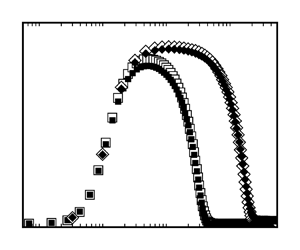Article contents
New formulations for the mean wall-normal velocity and Reynolds shear stress in a turbulent boundary layer under zero pressure gradient
Published online by Cambridge University Press: 10 August 2023
Abstract

In this study, a novel analytical solution is derived rigorously for the mean wall-normal velocity in a turbulent boundary layer (TBL) under zero pressure gradient (ZPG), without relying on any a priori assumptions regarding the mean streamwise velocity. By neglecting the higher-order terms in the exact solution, an approximate formulation for the mean wall-normal velocity is obtained. The accuracy of this approximation is then validated through a comparison with data from direct numerical simulations (DNS). Drawing upon the distinct behaviours of force balance in the inner and outer regions of the ZPG TBL, simplified approximate mean momentum equations are derived by decomposing the Reynolds shear stress into inner and outer parts. The inner and outer Reynolds shear stresses are then obtained through integration of the corresponding approximate mean momentum equations. The outer Reynolds shear stress is revealed to exhibit a strong connection to the mean wall-normal velocity. Specifically, it is observed that  $R_{uv-{out}}/u^2_\tau \approx 1 - UV/(U_e V_e)$, where
$R_{uv-{out}}/u^2_\tau \approx 1 - UV/(U_e V_e)$, where  $u_\tau$ represents the friction velocity, and
$u_\tau$ represents the friction velocity, and  $U_e$ and
$U_e$ and  $V_e$ denote the mean streamwise and wall-normal velocities at the boundary layer edge, respectively. Finally, an approximate formulation for the Reynolds shear stress across the entire TBL is developed by synthesizing the inner and outer parts. Extensive validation against both DNS and experimental data, spanning a wide range of Reynolds numbers, demonstrates the excellent agreement achieved.
$V_e$ denote the mean streamwise and wall-normal velocities at the boundary layer edge, respectively. Finally, an approximate formulation for the Reynolds shear stress across the entire TBL is developed by synthesizing the inner and outer parts. Extensive validation against both DNS and experimental data, spanning a wide range of Reynolds numbers, demonstrates the excellent agreement achieved.
JFM classification
- Type
- JFM Papers
- Information
- Copyright
- © The Author(s), 2023. Published by Cambridge University Press
References
- 2
- Cited by





